Ants, bees and viruses
Synopsis: Fire ants are globally invasive and cause problems for beekeeping. The fire ant is now established in Europe and recent studies suggest it can be infected with the most important honey bee virus. Worried? Perhaps you should be.
Introduction
The late Justin Schmidt, entomologist and selfless cataloguer of painful stings, described the sting of the honey bee as:
Burning, corrosive, but you can handle it. A flaming match head lands on your arm and is quenched first with lye and then sulfuric acid.
Almost all readers will know what that feels like. Yes, the description is a bit florid, and it depends where you are stung, but it’s tolerable. On the Schmidt Sting Pain Index honey bees score a respectable but moderate 2/4 (Schmidt et al., 1983).
By way of comparison, top of the four point scale are the Bullet ant (Paraponera clavata) …
Pure, intense, brilliant pain. Like walking over flaming charcoal with a 3-inch nail embedded in your heel.
… and the Warrior wasp (Synoeca septentrionalis), the sting of which prompted Schmidt to note:
Torture. You are chained in the flow of an active volcano. Why did I start this list?
Why indeed? {{1}}
Disappointingly, the pain associated with the highly invasive yellow-legged or Asian hornet (Vespa velutina) isn’t recorded by Schmidt, or in subsequent studies by another certifiable committed scientist, Christopher Starr.
Perhaps this doesn’t matter; increasing numbers of us – both beekeepers and the general public – are going to have the opportunity to experience the Asian hornet sting first hand {{2}} as they become established in western Europe.
Another gain but less pain
But don’t worry, if you’d like to experience a novel sting that Schmidt did catalogue there’s a new opportunity as invasive fire ants (Solenopsis invicta) now appear to be established in Europe.
Fire ants score a paltry 1/4 on the Schmidt Sting Pain Index:
Sharp, sudden, mildly alarming. Like walking across a shag carpet and reaching for the light switch.
Consider them a gentle introduction to insect-associated pain.
You’ve got to start somewhere, and it’s useful to have the comparison.
However, a score of 1/4 is not painless and, if you’re unlucky, you may experience an anaphylactic reaction with potentially fatal consequences. The venom is different from that of honey bees, so tolerance of the latter is no guarantee etc. …
Aside from masochism, UK and European beekeepers should also be interested in the arrival of fire ants for two additional reasons;
- they can cause problems for beekeeping by invading hives, robbing stores (both honey and pollen) and brood
- deformed wing virus (DWV) appears to replicate in fire ants and may cause disease; this has potential implications for both bees and ants
But let’s not get ahead of ourselves. I’ll briefly introduce the fire ant and describe the very recent evidence for a population becoming established in southern Europe. I’ll then discuss similarly recent studies that have detected DWV-like symptoms in flying forms of the ant.
Out of Africa South America
There are ~200 species of fire ant belonging to the genus Solenopsis, but it is primarily S. invicta that causes the majority of problems. In the US it is referred to as the red imported fire ant (RIFA) to distinguish it from other red ants.
Here I’ll just use the term ‘fire ant’.
It’s worth noting that the fire ant is one of the world’s most invasive alien species and the fifth costliest globally in terms of economic impact.
Therefore, the spread of this ant to new regions – like Europe – is likely to cause more problems than a few stings scoring 1/4 on the Schmidt Sting Pain Index. This is not an article on fire ant venom, but since I’ve mentioned the sting (again) I should add that not only is the sting painful, but it usually develops into a small white uncomfortable pustule within 36 hours. If this is scratched it may become infected and can result in scarring.
The ant originated in South America but, within the last 100 years, has spread to Mexico, the Caribbean, China, Taiwan, Australia and much of the United States. It reached New Zealand but was subsequently eradicated. It has also previously been inadvertently introduced to Europe (Spain, Finland and the Netherlands) but had not become established {{3}}.
… and into Europe
Menchetti et al., (2023) have recently published a short report showing that the fire ant is established on the eastern coast of Sicily, near the city of Syracuse. It has probably been present there for several years; locals report frequent ant stings since 2019 and a large number of nests, many of which were mature, were found in surveys.
It’s not clear how the fire ant was imported to this area in Sicily, though the nearby port at Augusta (~13 km north) would seem a likely incursion point as the fire ant has previously been transported in shipping containers.
Where next?
Fire ants mate on the wing. The males and the virgin queens have wings – the winged forms are called alates (from the Latin ālātus meaning winged) which will be important later in the post – and go on swarming nuptial flights. These swarms get blown downwind, so long-range natural dispersal typically goes with the prevailing wind.
In eastern Sicily the prevailing winds are south-easterlies i.e. out over the Mediterranean (red lines in the map above).
So, nothing to worry about?
Of course not. The global spread of fire ants over the last century has not been due to natural dispersal … we’ve given them a helping hand.
National and international trade will ensure that an established population are likely to be spread further, irrespective of the wind direction, though this will of course help local dispersal.
An alternative approach is to predict areas that are suitable for colonisation by fire ants, taking account of their predilection for areas of damp soil – riverbanks, well watered lawns and roadside verges – and the temperature minima below which they cannot survive. This is lower (probably below -12°C) than you would expect for a tropical/sub-tropical species.
Urban heat islands
The prediction is that, currently, ~7% of Europe is suitable. However, temperature modelling suggests this will rise to 25% of the land area by 2050 and exceed 30% by the end of this century.
And, for UK readers, there are several regions currently suitable in and around major cities (which are urban heat islands with elevated temperatures) such as London, Birmingham, Manchester, Cardiff, Edinburgh and Glasgow. You’ll of course be aware that most imported goods end up in these cities because that’s where the majority of the population live.
By 2050 many areas in England and Wales are likely to be suitable for fire ants as a consequence of global warming.
The environmental impact of fire ants
Fire ants are aggressive predators. They also defend the nest vigorously and can attack and kill small animals such as lizards {{4}}.
Perhaps unsurprisingly, considering a nest can contain up to 250,000 ants, the presence of fire ants can have a significant environmental impact. It’s worth noting that nest densities can be high; in Sicily, surveys detected 88 nests within an area of ~1 km2.
In addition to lizards, small mammals and some ground nesting birds may also be attacked by fire ants. They also predate a wide range of insects, including many pollinators, and both crop plants and seeds. In addition to ‘eating stuff’ their nests can damage farm machinery and lead to road subsidence.
For almost 80 years it’s been noted that fire ants have an affinity for electrical and telephone equipment; this may be due to pheromones produced by the ant (that attracts more ants) in response to mild electric shocks. Whatever the reason, they can invade switching equipment, transformers and telephone exchange boxes.
It’s not all bad news; fire ants also predate plant pests and their burrowing improves soil fertility, but it’s probable that we’d be better off without them … particularly in areas where they are not native.
Bradley Vinson (2013) has written a wide-ranging review of environmental damage (and benefits) resulting from fire ant invasions.
Fire ants and beekeeping
If and when fire ants arrive in the UK and once they’ve made their way to the wet and windy north west of Scotland I’ll write a follow up post on how to protect your hives from S. invicta.
I can’t give practical advice if I’ve got no practical experience … {{5}}.
Expect to see modified hive stands with moats around the legs (though the resourceful fire ant can form rafts to escape floods!), or coated in AntCANT insect barrier.
Inevitably there are also a range of toxic baits that can be used to kill colonies, though some beekeepers simply suggest drenching nests in soapy water.
None of the above are recommendations … and it’ll probably be a century or more until they reach me, so don’t hold your breath.
As with more general environmental impacts there may even be some positive consequences for beekeeping. Hood et al., (2003) developed a biological control method to clear stored drawn comb of wax moths using fire ants.
Every cloud has a silver lining.
OK, enough about things I know little of … let’s instead move onto something I do know a bit about, the replication of deformed wing virus in insects other than honey bees, and specifically in fire ants.
DWV is present in fire ants
In analysis that surprised precisely no-one at all, deformed wing virus (DWV) is detectable in fire ants.
Deformed wing virus is the most important virus of honey bees, responsible for the ‘does what it says on the tin’ wing deformities seen in recently eclosed workers. It also shortens the lifespan of the long-lived winter bees, resulting in the overwintering cluster dwindling in size and eventually becoming too small for thermoregulation … it either freezes or starves to death, or – if it makes it through to the spring – is too small to efficiently rear brood and struggles to expand.
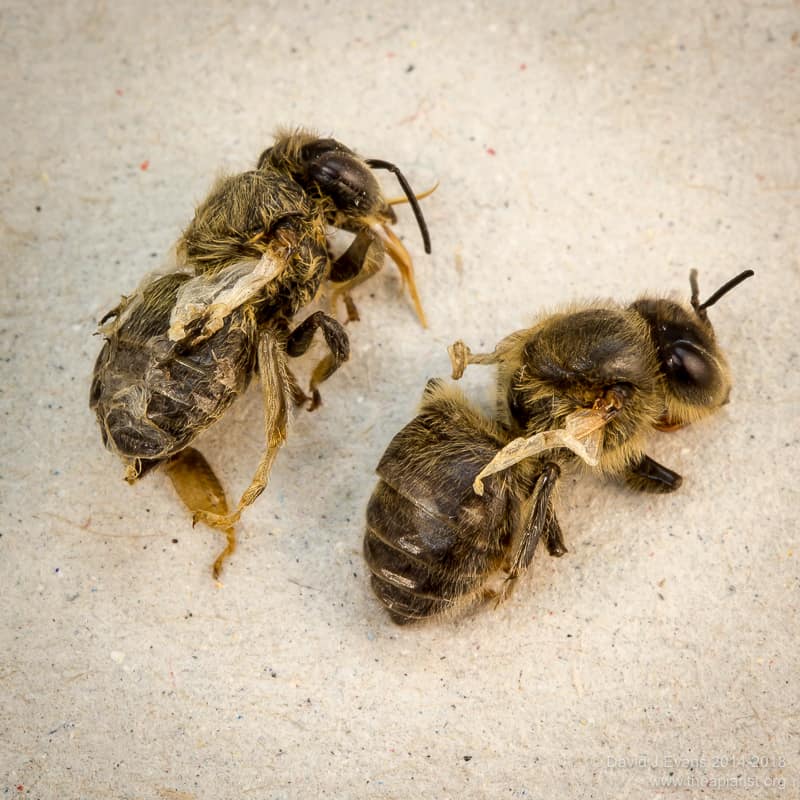
DWV symptoms
DWV is everywhere, all honey bees carry the virus. Inevitably it’s also present on plants visited by bees. Anything that feeds on honey bees, or the debris underneath the hive, will therefore be exposed to DWV.
Unsurprisingly, DWV is very readily detected in environmental surveys, or in analysis of viruses present in other pollinators.
Which doesn’t mean that it necessarily infects or cause disease in these other insects.
Even if an insect displays deformed wings and has detectable deformed wing virus it does not mean that DWV is the cause of the deformed wings … correlation and causation are two very different things and detailed studies are necessary to discriminate between the two.
Thankfully – and commendably – a recent study of DWV in S. invicta (Miles et al., 2023) has made this important distinction.
DWV replicates in fire ants
This is where things get a bit more complicated. If you want to confirm virus replication you need to demonstrate that a transient intermediate product in the replication cycle of the virus is present. This is the template from which more virus is generated – think of this intermediate template as the inked linocut from which lots of mirror-image prints can be produced.
I’ve discussed this before when posting about our studies of virus replication in Varroa mites. The intermediate product is shown as a red arrow in the cartoon below.
With appropriately sensitive methods this intermediate product can be detected. However, most analysis of DWV only records prevalence (i.e. virus presence) and then makes the assumption that it replicates {{6}}.
Miles et al., (2023) used appropriate methods and demonstrated DWV replication in both workers and male and female alates of fire ants.
DWV-like symptoms in fire ants
The penultimate piece of the jigsaw was the demonstration that some alates displayed deformed wings and altered locomotion, ranging from a mild limp {{7}} to the inability to walk.
About 70% of colonies – both collected and maintained in the lab or field isolates – exhibited DWV-like symptoms.
It’s not known why DWV causes deformed wings, though studies we published (Gusachenko et al., 2020) with a ‘green’ virus allowed us to demonstrate that the virus replicates in the wing buds of developing honey bee pupae. Whatever the reason, the presence of the virus coupled with the presence of DWV-like symptoms is certainly suggestive that the two things are linked.
Why then do I use the word ‘penultimate’ in the opening paragraph of this section?
Other explanations
If fire ants consume developing honey bee larvae and pupae, or graze busily on the debris underneath a hive, they will ingest honey bee tissues in which DWV is replicating.
Can you see where I’m going with this?
Perhaps the replication intermediate present in the fire ants originates in the consumed honey bee tissues and the virus doesn’t replicate in fire ants at all … other than those with a belly-full of honey bee?
Perhaps the deformed wing symptoms are caused by low temperatures during pupation? This has been observed in other insect species.
To be certain that an infectious agent is responsible for a disease it needs to fulfil Koch’s postulates. Essentially these state that the pure infectious agent must be introduced, disease must be observed and the agent re-isolated.
All of the fire ants studied will have been environmentally exposed to DWV i.e. anything but a ‘pure’ inocula.
However, some of the ant colonies were maintained in the laboratory (though it doesn’t say for how long) and this makes it less likely that the DWV replication intermediates that were detected were actually present in ingested honey bee tissue.
But the proper confirmatory experiments still need to be done.
Virus reservoirs and biocontrol
Let’s assume that DWV does replicate and cause disease in the fire ant S. invicta … so what?
I think there are three areas of potential interest. The first is relatively minor and possibly inconsequential, the second is of largely academic interest and the final may have potential application.
- DWV-infected fire ants may act as a reservoir for DWV in the environment, potentially exposing other insects to the virus, though I acknowledge that DWV is nearly ubiquitous anyway, so why aren’t these ‘other insects’ already exposed? However, a different host will apply novel evolutionary pressures to the virus, potentially resulting in a virus more pathogenic for honey bees, or with an altered host range. Unlikely, but not out of the question.
- The biochemical and cellular similarities between honey bees and fire ants must account for the virus replicating in both systems. Identifying commonalities are will help us understand virus replication better … and therefore will help us identify possible ways to inhibit the virus from replicating. A bit geeky and undoubtedly a long-shot, but interesting nevertheless.
- Since fire ants mate on the wing, and therefore need to fly, a pathogen that inhibits wing development, like DWV, might be exploited as a biocontrol agent to limit the spread of fire ants. Lots more questions need to be addressed before this became a reality … do DWV-infected symptomatic ant colonies produce fewer alates? Do these colonies have lower reproductive fitness? Are there different strains of DWV with greater pathogenicity for fire ants?
Biocontrol of fire ants isn’t going to happen anytime soon. Too many unanswered questions remain and biocontrol is always problematic anyway {{8}}.
In the meantime, brace yourself for the arrival of fire ants at an apiary near you …
References
Forzan, M., Felicioli, A., Sagona, S., Bandecchi, P., and Mazzei, M. (2017) Complete Genome Sequence of Deformed Wing Virus Isolated from Vespa crabro in Italy. Genome Announc 5: e00961-17.
Gusachenko, O.N., Woodford, L., Balbirnie-Cumming, K., Campbell, E.M., Christie, C.R., Bowman, A.S., and Evans, D.J. (2020) Green Bees: Reverse Genetic Analysis of Deformed Wing Virus Transmission, Replication, and Tropism. Viruses 12: 532 https://www.mdpi.com/1999-4915/12/5/532.
Hood, W.M., Horton, P.M., and Mccreadie, J. (2003) Field evaluation of the red imported fire ant (Hymenoptera: Formicidae) for the control of wax moths (Lepidoptera: Pyralidae) in stored honey bee comb. Journal of Agricultural and Urban Entomology 20: 93–103.
Menchetti, M., Schifani, E., Alicata, A., Cardador, L., Sbrega, E., Toro-Delgado, E., and Vila, R. (2023) The invasive ant Solenopsis invicta is established in Europe. Current Biology 33: R896–R897 https://www.cell.com/current-biology/abstract/S0960-9822(23)00974-0.
Miles, G.P., Liu, X.F., Amiri, E., Grodowitz, M.J., Allen, M.L., and Chen, J. (2023) Co-Occurrence of Wing Deformity and Impaired Mobility of Alates with Deformed Wing Virus in Solenopsis invicta Buren (Hymenoptera: Formicidae). Insects 14: 788 https://www.mdpi.com/2075-4450/14/10/788.
Schmidt, J.O., Blum, M.S., and Overal, W.L. (1983) Hemolytic activities of stinging insect venoms. Archives of Insect Biochemistry and Physiology 1: 155–160 https://onlinelibrary.wiley.com/doi/abs/10.1002/arch.940010205.
Vinson, S.B. (2013) Impact of the invasion of the imported fire ant. Insect Science 20: 439–455 https://onlinelibrary.wiley.com/doi/abs/10.1111/j.1744-7917.2012.01572.x.
Wong, M.K.L., Economo, E.P., and Guénard, B. (2023) The global spread and invasion capacities of alien ants. Current Biology 33: 566-571.e3 https://www.cell.com/current-biology/abstract/S0960-9822(22)01920-0.
{{1}}: If you want to know, get his book The Sting of the Wild, ISBN:978-1421425641
{{2}}: Or elsewhere.
{{3}}: If you’re weirdly interested in the huge number of invasive alien ant species (~520 and counting) I can recommend the recent review by Wong et al., 2023 … go on, knock yourself out!
{{4}}: Some species of lizards in the US have evolved longer legs and new behaviours over the last 70 years in response to the introduction of the fire ant.
{{5}}: Not meaningfully anyway.
{{6}}: An example would be the analysis of DWV in the European hornet (Vespa crabro) by Forzan et al., 2017 which claimed replication competence but didn’t demonstrate anything of the sort.
{{7}}: They used the more scientific term ‘altered gait’.
{{8}}: As an aside, fire ants eat biocontrol agents such as parasitoid wasps, so rendering control ineffective.
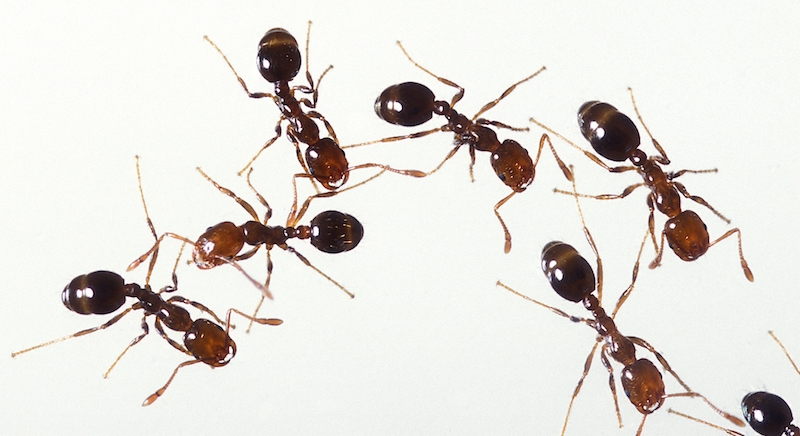
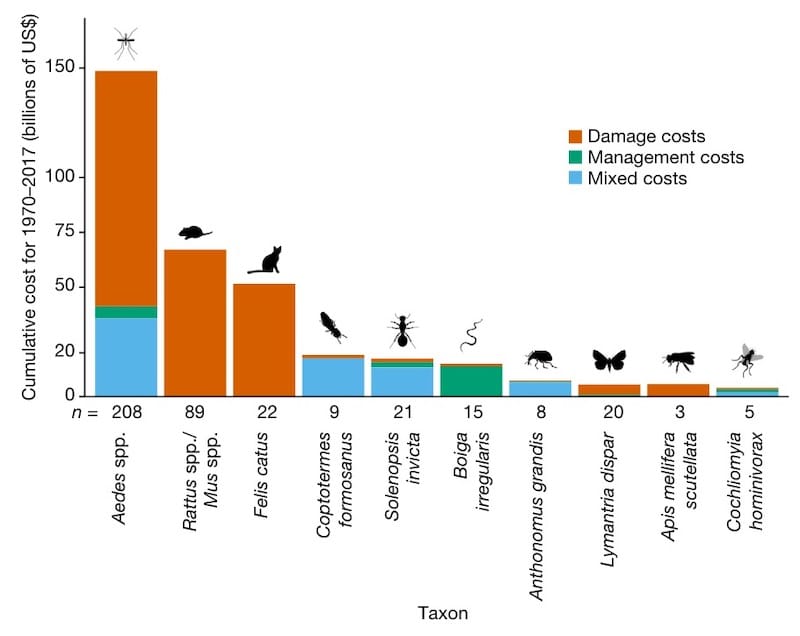
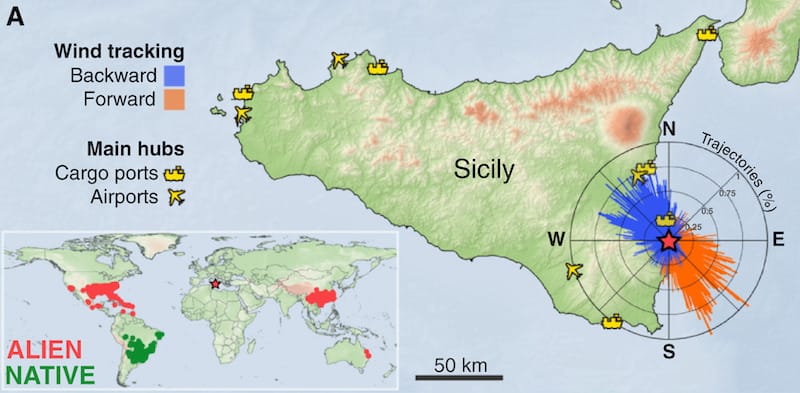
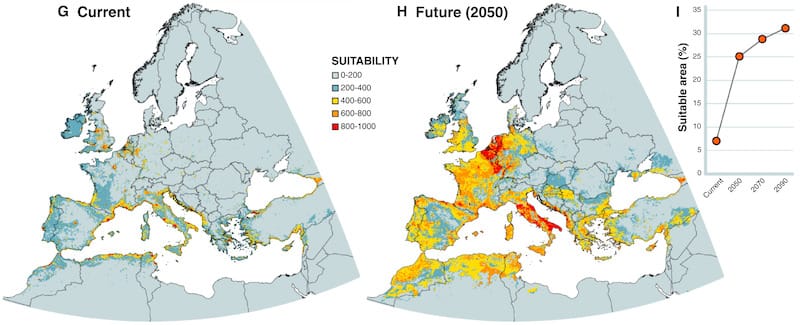


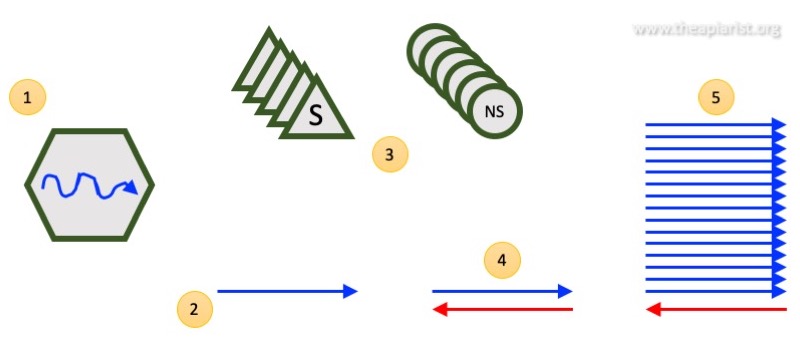
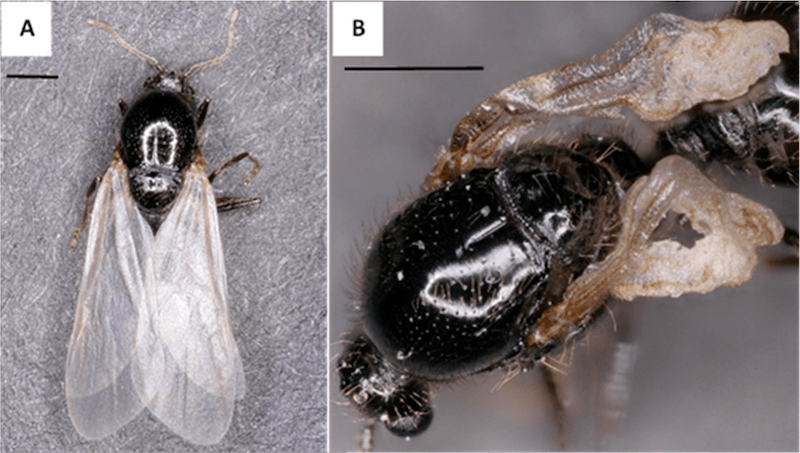
Join the discussion ...